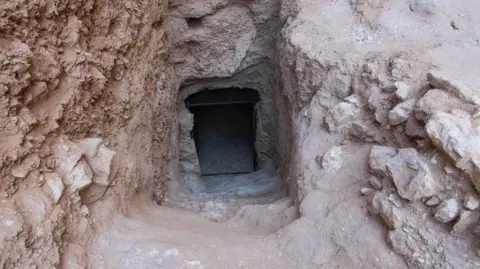Major Archaeological Breakthrough
For the first time in over 100 years, there was the discovery of the tomb of a pharaoh in Egypt’s Valley of the Kings. The discovery was conducted by Dr. Piers Litherland from the UK, together with a cadre of archaeologists, who have been making research in that area for more than a decade.
Finding of the Tomb of Pharaoh Thutmose II
Inside there was a chamber with a ceiling painted in blue and yellow stars; thus leading the team to a secret staircase going downward into the tomb; after further examination, it was certified that the burial site belonged to Pharaoh Thutmose II, who ruled Egypt from 1493 and 1479 B.C. Months passed before the researchers actually reached the burial chamber, with thousands of meters of debris needing to be cleared by the team to reach it.
A Landmark Find Since Tutankhamun’s Tomb
Initially thought to be the tomb of a queen, the royal ornaments confirmed it to be that of a pharaoh. Experts now regard this finding as the most important since the opening of the tomb of Pharaoh Tutankhamun in 1922.
Tomb’s Unique Aspects
No artifacts were found inside, which is atypical for an ancient tomb, not because of looting but maybe because it was deliberately left empty. There was also the issue of water flow during the excavation, as the tomb was awkwardly located below a waterfall. Also recovered were the remains of Thutmose II from a side corridor, alongside fragments of white marble stone on which his name was inscribed.
Collaborative Excavation Effort
The discovery is part of a collaborative project between the UK-New Kingdom Research Foundation and the Ministry of Tourism and Antiquities of Egypt, marking a new addition to Egyptological research as well as historical research.
